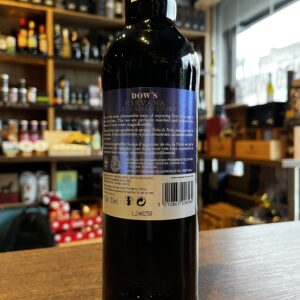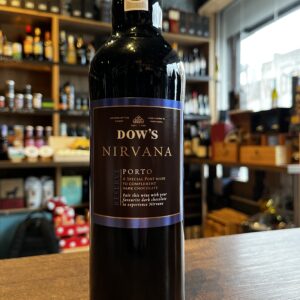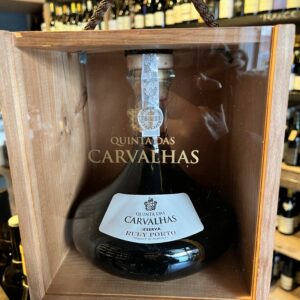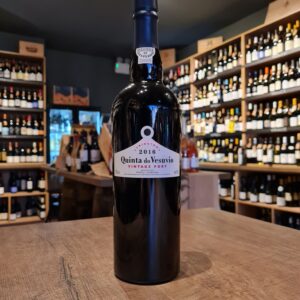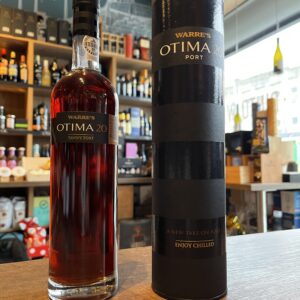-
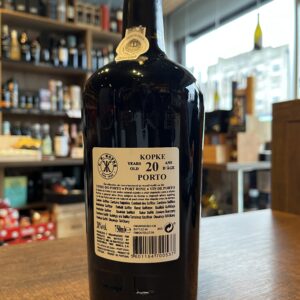
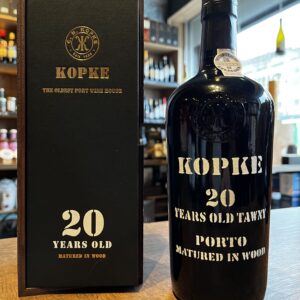 Kopke, a house specialising in aged tawny and aged white ports, is the oldest established port producer, in existence since 1638. There are special places in the world. Kopke found one of them. Quinta de São Luiz is located on the left bank of the river Douro, near Pinhão, in the parish of Tabuaço. It is an imposing estate, considered one of the most emblematic of the Douro region. The Quinta has gone through two major changes: on the one hand, the construction of the Bagaúste dam, with the consequent rise of the water level and the loss of vineyard land; on the other, the enlargement of the total area with the acquisition of several other properties in the area. The estate is made up of 125 hectares, 90 of which are planted with vines. The main grape varieties grown here are Touriga Nacional, Touriga Franca, Tinta Roriz, Tinta Cão. There are also small plots of Tinta Barroca and Souzão. The vines are classified as A, the highest grade in the Demarcated Region of the Douro. Irresistible with a starter of foie gras with aubergine and walnuts. A great choice for an endless array of desserts, such as toffee brownies, chocolate and pistachio pavé, or crostini of walnuts with chèvre. When teh weather picks up or the height of the Summer, serving this Port slightly chilly is a must.
Kopke, a house specialising in aged tawny and aged white ports, is the oldest established port producer, in existence since 1638. There are special places in the world. Kopke found one of them. Quinta de São Luiz is located on the left bank of the river Douro, near Pinhão, in the parish of Tabuaço. It is an imposing estate, considered one of the most emblematic of the Douro region. The Quinta has gone through two major changes: on the one hand, the construction of the Bagaúste dam, with the consequent rise of the water level and the loss of vineyard land; on the other, the enlargement of the total area with the acquisition of several other properties in the area. The estate is made up of 125 hectares, 90 of which are planted with vines. The main grape varieties grown here are Touriga Nacional, Touriga Franca, Tinta Roriz, Tinta Cão. There are also small plots of Tinta Barroca and Souzão. The vines are classified as A, the highest grade in the Demarcated Region of the Douro. Irresistible with a starter of foie gras with aubergine and walnuts. A great choice for an endless array of desserts, such as toffee brownies, chocolate and pistachio pavé, or crostini of walnuts with chèvre. When teh weather picks up or the height of the Summer, serving this Port slightly chilly is a must. -
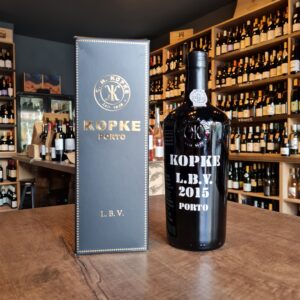 The wine owes its name to the port city of Porto, but comes from the Douro Valley. Here you will find one of the most spectacular wine landscapes in the world with terraced vineyards on steep slopes. It is scorching hot in summer, freezing cold in winter. The Douro Valley was already demarcated in 1756, making it the oldest regulated area of origin in the world. Port itself is a fortified wine. By interrupting the fermentation by adding wine alcohol, the wine retains its residual sugars and also gets its relatively high alcohol percentage. Port does not stand for a single wine, but for a whole series of wines. Wines with very different styles and tastes due to differences in the blending and aging of the base wines. In 1636 Nicolau Kopkë settled in Portugal as 'consul general' (a kind of representative) of the Hanseatic League, a partnership between merchants and cities, during the Middle Ages. Two years later, the first bottles of wine were shipped to Northern Europe. And when Nicolau bought a farm in the Douro in 1781, he changed from buyer to producer. Port wine soon became the focus of the company. Kpke now is one of the oldest Port Wine House. Recognized by the variety and distinction of its Ports, Kopke represents in XXI century a symbol of quality and prestige. LBV stands for Late Bottle Vintage and is the result of single year's harvest of superior quality, aged in oak Vats. Balancing the intensity of flavours, the Late Bottled Vintage Port is the ideal choice to serve with main courses of meat, like filet mignon encrusted four peppers and veal cutlet with Bérnaise sauce. Its versatility knows no borders, being perfect to combine with an exuberant cheesecake of chocolate mint, a pear and chocolate mille-feuille or simply to enjoy with cheeses of medium intensity.
The wine owes its name to the port city of Porto, but comes from the Douro Valley. Here you will find one of the most spectacular wine landscapes in the world with terraced vineyards on steep slopes. It is scorching hot in summer, freezing cold in winter. The Douro Valley was already demarcated in 1756, making it the oldest regulated area of origin in the world. Port itself is a fortified wine. By interrupting the fermentation by adding wine alcohol, the wine retains its residual sugars and also gets its relatively high alcohol percentage. Port does not stand for a single wine, but for a whole series of wines. Wines with very different styles and tastes due to differences in the blending and aging of the base wines. In 1636 Nicolau Kopkë settled in Portugal as 'consul general' (a kind of representative) of the Hanseatic League, a partnership between merchants and cities, during the Middle Ages. Two years later, the first bottles of wine were shipped to Northern Europe. And when Nicolau bought a farm in the Douro in 1781, he changed from buyer to producer. Port wine soon became the focus of the company. Kpke now is one of the oldest Port Wine House. Recognized by the variety and distinction of its Ports, Kopke represents in XXI century a symbol of quality and prestige. LBV stands for Late Bottle Vintage and is the result of single year's harvest of superior quality, aged in oak Vats. Balancing the intensity of flavours, the Late Bottled Vintage Port is the ideal choice to serve with main courses of meat, like filet mignon encrusted four peppers and veal cutlet with Bérnaise sauce. Its versatility knows no borders, being perfect to combine with an exuberant cheesecake of chocolate mint, a pear and chocolate mille-feuille or simply to enjoy with cheeses of medium intensity. -
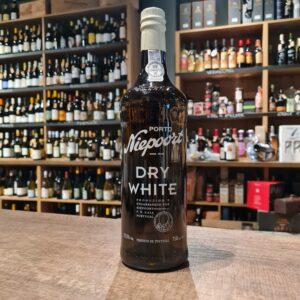 Niepoort is a Portuguese winery that was founded in 1842. It is currently run by Dirk Niepoort, fifth generation of the family it is named after. They use traditional Portuguese techniques such as grape treading, fermentation in cement tanks or aging in pipes, 550-litre port-aging barrels, whilst also using new technologies that ensure the grapes are handled with care. The winery has vines in different locations, some of which are over 100 years old, and an aging cellar in the town of Vila Nova de Gaia. The Niepoort Dry White vines have an average age of 30 years old and are planted in shale soils. The planting density of the plots ranges from 4,000 to 6,000 plants per hectare and the harvest is carried out manually to take the best care of the grapes. Serve as an aperitif, but it also goes down a treat as a dessert wine or simply on its own at the end of a meal
Niepoort is a Portuguese winery that was founded in 1842. It is currently run by Dirk Niepoort, fifth generation of the family it is named after. They use traditional Portuguese techniques such as grape treading, fermentation in cement tanks or aging in pipes, 550-litre port-aging barrels, whilst also using new technologies that ensure the grapes are handled with care. The winery has vines in different locations, some of which are over 100 years old, and an aging cellar in the town of Vila Nova de Gaia. The Niepoort Dry White vines have an average age of 30 years old and are planted in shale soils. The planting density of the plots ranges from 4,000 to 6,000 plants per hectare and the harvest is carried out manually to take the best care of the grapes. Serve as an aperitif, but it also goes down a treat as a dessert wine or simply on its own at the end of a meal -
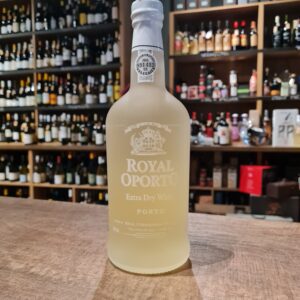 The Port is by difinition, generous and full-bodied wine, produced in the region Douro- the demarcated region of the world's oldest wines. Made from grapes traditionally used in the region, its wine making process is characterized by adding brandy to the wine in full fermentation. This type of port that inspires moments and new forms of consumption, which we recommend be served as Port Tonic. Classic serving would be as a chilled aperitif, but also you could be adventurous and make a ''Caipi Royal'' or just serve it on the rocks with an orange slice.
The Port is by difinition, generous and full-bodied wine, produced in the region Douro- the demarcated region of the world's oldest wines. Made from grapes traditionally used in the region, its wine making process is characterized by adding brandy to the wine in full fermentation. This type of port that inspires moments and new forms of consumption, which we recommend be served as Port Tonic. Classic serving would be as a chilled aperitif, but also you could be adventurous and make a ''Caipi Royal'' or just serve it on the rocks with an orange slice. -
Out of stock
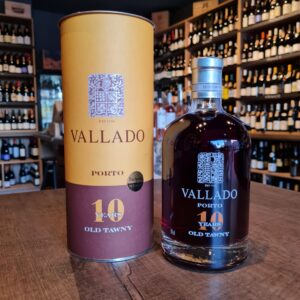 Quinta do Vallado, established in 1716, is one of the oldest and most famous Quintas in the Douro Valley. It once belonged to the legendary Dona Antonia Adelaide Ferreira, and still belongs to her descendents. Produces both still and port wines. This eighteenth-century Douro wine estate is actually one of the most modern-looking in Portugal. Although the team uses the traditional panoply of indigenous grapes, its methods are bang up to date and the results are nothing short of sensational. Tawny ports are wines usually made from red grapes that are aged in wooden barrels exposing them to gradual oxidation and evaporation. As a result of this oxidation, they mellow to a golden-brown color. The exposure to oxygen imparts "nutty" flavours to the wine, which is blended to match the house style. This port is really best enjoyed with a good strong cheese board. Think mature hard cheeses and salty blues. Rich and flavoursome to match with the intense flavours of the port.
Quinta do Vallado, established in 1716, is one of the oldest and most famous Quintas in the Douro Valley. It once belonged to the legendary Dona Antonia Adelaide Ferreira, and still belongs to her descendents. Produces both still and port wines. This eighteenth-century Douro wine estate is actually one of the most modern-looking in Portugal. Although the team uses the traditional panoply of indigenous grapes, its methods are bang up to date and the results are nothing short of sensational. Tawny ports are wines usually made from red grapes that are aged in wooden barrels exposing them to gradual oxidation and evaporation. As a result of this oxidation, they mellow to a golden-brown color. The exposure to oxygen imparts "nutty" flavours to the wine, which is blended to match the house style. This port is really best enjoyed with a good strong cheese board. Think mature hard cheeses and salty blues. Rich and flavoursome to match with the intense flavours of the port.


